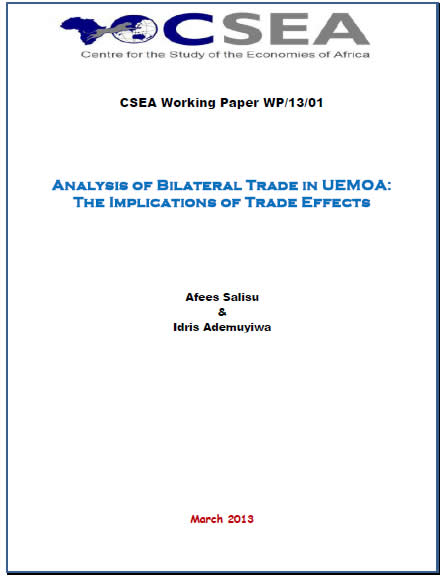Author: Afees Salisua & Idris Ademuyiwab
Publication Date: March, 2013
Key words: Trade, Gravity model, UEMOA, Trade creation, Panel data
JEL Classification: F15, F33, C23.
Document Size: 21 pages
This paper evaluates the implications of trade effects in bilateral trade analyses drawing evidence from UEMOA. Consequently, it provides three main innovations: (i) it augments the gravity model (GM hereafter) to include Kelejian et al (2012) type of trade effects among others; (ii) it employs a more generalized GM proposed by Salisu et al. (2012) that accounts for all possible dimensions of trade effects; and (iii) it examines the implications of ignoring these effects in bilateral trade models. Like the previous literature, it shows that economic size, geographical and political factors are the major drivers of bilateral trade in UEMOA. In addition, following from the augmented GM, it finds that UEMOA has been trade creating. Contrarily, the results of a more generalized GM reveal that UEMOA has been trade diverting. Based on the diagnostic tests, the latter evidence seems more reliable than the former. Therefore, ignoring these dimensions of trade effects in bilateral trade analysis when in fact they exist may yield biased and inconsistent results.

